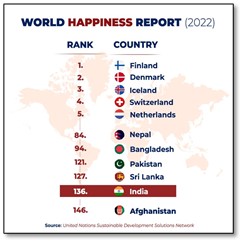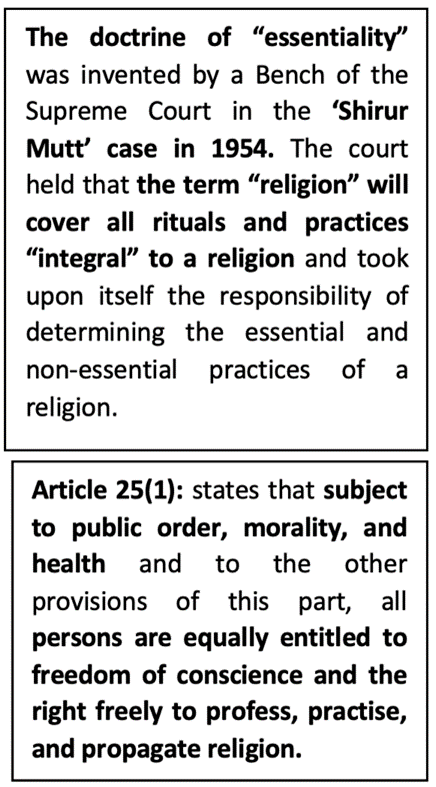Wednesday, 23rd March 2022
World Air Quality Report 2021
In News
India's air pollution worsened in 2021, according to the World Air Quality Report released by IQAir, a Swiss firm.
About the Report
- The report is based on PM2.5 air quality data from 6,475 cities in 117 countries, regions, and territories around the world.
- The data used to create this report was generated by tens of thousands of regulatory and low-cost air quality monitoring stations operated by governments, non-profit organizations, research institutions, educational facilities, companies, and citizen scientists around the world.
- The PM2.5 data is reported in units of micrograms per cubic meter (μg/m3) and utilizes World Health Organization’s (WHO) annual PM2.5 air quality guideline and interim targets as a framework for data visualization.
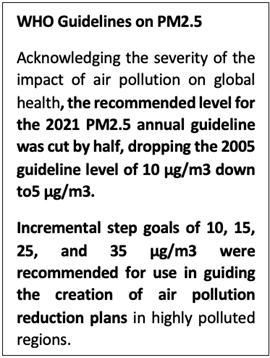
Status of India
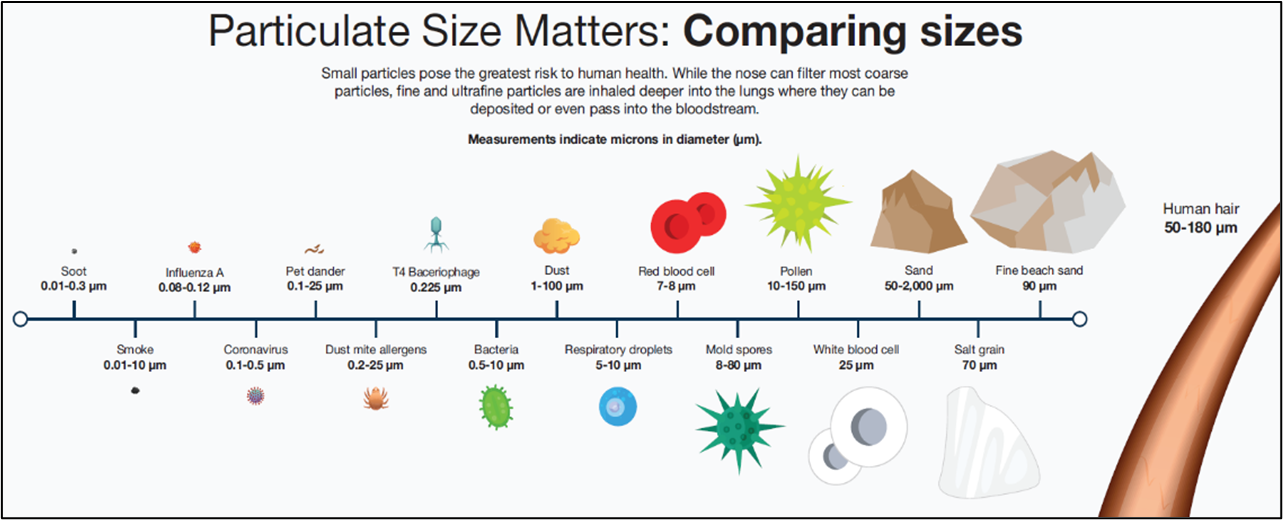
- Deterioration of Air Quality: India was home to 11 of the 15 most polluted cities in Central and South Asia in 2021, with Delhi the worst polluted capital city in the world.
- No cities in India met the WHO air quality guideline of 5 μg/m3.
- India’s annual average PM2.5 levels reached 58.1 μg/m3 in 2021, ending a three-year trend of improving air quality, returning to pre-quarantine concentrations.
- In 2021, 48% of India’s cities exceeded 50 μg/m3, or more than 10 times the WHO guideline.
- Challenges: In India, air pollution is the second biggest risk factor for disease, and the economic cost of air pollution is estimated to exceed $150 billion dollars annually.
- Major sources of air pollution in India include vehicular emissions, power generation, industrial waste, biomass combustion for cooking, the construction sector, and episodic events like crop burning.
- Due to the pandemic and the related restrictions, the National Clean Air Program (NCAP) enacted in 2019 has progressed sluggishly.
- Vehicular Emissions, the biggest culprit: It is estimated that 20% to 35% of total urban PM2.5 concentrations is directly or indirectly due to internal combustion engines in motor vehicles.
- Annual vehicle sales in India are expected to increase by 2030.
- India has adopted rigorous vehicle emission standards for new vehicles including the BS-VI standard and developing technologies like emissions testing methodologies capable of measuring emissions under real-world driving conditions, to be available by 2023.
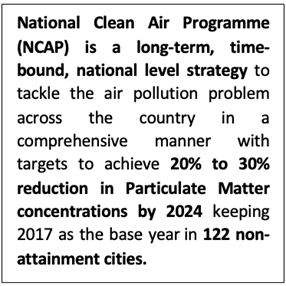
Global PM2.5 concentrations:
Countries and regions in East Asia, Southeast Asia, and South Asia suffered from the highest annual average PM2.5 concentration weighted by population.

Sources:
Par Tapi Narmada river-linking project
In News
The tribals in Gujarat have recently held a public meeting at Kaprada in Valsad district to protest against the Centre’s Par Tapi Narmada river-linking project.
The Par Tapi Narmada river-linking project
- The Protest: The protest is against the dams proposed to be built under Par-Tapi-Narmada river link project, which covers areas of south Gujarat and Nashik district in Maharashtra.
- About the project: The Par Tapi Narmada link project was envisioned under the 1980 National Perspective Plan under the former Union Ministry of Irrigation and the Central Water Commission (CWC).
- Implementation of the Project: A MoU was signed between Gujarat, Maharashtra and the central government in 2010, that envisaged that Gujarat would get the benefit of the link project through en-route irrigation from the link canal and in the drought-prone Saurashtra Kutch region by way of substitution.
- Purpose: The project proposes to transfer river water from the surplus regions of the Western Ghats to the deficit regions of Saurashtra and Kutch. It proposes to link three rivers:
- Par, originating from Nashik in Maharashtra and flowing through Valsad,
- Tapi from Saputara that flows through Maharashtra and Surat in Gujarat, and
- Narmada originating in Madhya Pradesh and flowing through Maharashtra and Bharuch and Narmada districts in Gujarat.
- The link mainly includes the construction of seven dams (Jheri, Mohankavchali, Paikhed, Chasmandva, Chikkar, Dabdar and Kelwan), three diversion weirs (Paikhed, Chasmandva, and Chikkar dams), two tunnels (5.0 kms and 0.5 kms length), and six powerhouses.
- Of these, the Jheri dam falls in Nashik, while the remaining dams are in Valsad and Dang districts of South Gujarat.
- Water distribution:
- The excess water in the interlinked Par, Tapi and Narmada rivers which flow into the sea in the monsoon would be diverted to Saurashtra and Kutch for irrigation.
- During the monsoon season, the water which is supplied to Saurashtra through the state government from Sardar Sarovar dam will be saved and used for other purposes which is presently used in urban areas and for irrigation.
- Significance:
- Irrigation: The surplus water proposed to be diverted through link project is expected to irrigate an area of 2,32,175 hectares, which includes 42,368 ha area in the Saurashtra region.
- Prevents flood: This will also help in containing regular flood-like situations in the rivers in Valsad, Navsari, Surat and Bharuch.
- Consequence:
- Submergence: According to a report by the NWDA, about 6065 ha of land area will be submerged due to the proposed reservoirs. This will affect a total of 61 villages of which one will be fully submerged and the remaining 60 partly. The total number of affected families would be 2,509 spread across various districts of Gujarat and Maharashtra.
- Fear of Tribal displacement: The districts where the project will be implemented are largely dominated, by tribals who fear displacement.

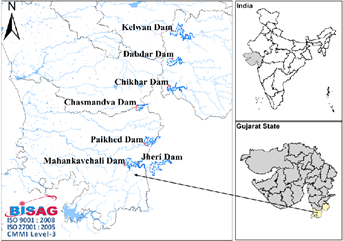
Source:
- Explained: What is Par Tapi Narmada river-linking project & why are tribals in Gujarat protesting against it?
- Par Tapi-Narmada River Linking Project: Why Are Gujarat Tribals Opposing It? Explained
Image source:
Economic crisis in Sri Lanka
In News
The economic crisis in Sri Lanka has been aggravating in recent times.
About the News
- During the first wave of the pandemic in 2020, Sri lanka saw an economic meltdown when key foreign exchange earning sectors, such as exports and remittances, along with tourism, were brutally hit.
- The Sri Lankan rupee has fallen to nearly 265 against the U.S. dollar. Consumer Price inflation is at 8% and Sri Lanka has to repay foreign debt totalling nearly $7 billion this year and continue importing essentials from its dwindling dollar account.
- In this regard, India has extended assistance totalling $2.4 billion to its neighbour. However, there is growing scepticism in Sri Lankan media over Indian assistance “being tied” to New Delhi inking key infrastructure projects in the island nation especially the strategic Trincomalee Oil Tank Farm project
What are the major causes of concern for SriLanka?
- Soaring inflation: Sri Lanka’s economic crisis is aggravating rapidly, putting citizens through enormous hardship. Consumer Price inflation is at 16.8% and foreign reserves stood at $2.31 billion at the end of February.
- Depleting employment: Pandemic in 2020 induced distress causing thousands of Sri Lankan labourers in West Asian countries being left stranded and returned jobless. Garment factories and tea estates in Sri Lanka could not function, as infections raged in clusters, and thousands of youths lost their jobs in cities as establishments abruptly sacked them or shut down.
- Foreign exchange earnings hit by pandemic: All key foreign exchange earning sectors, such as exports and remittances, along with tourism, have been brutally hit especially by lockdown. Sri Lanka is required to repay foreign debt totalling nearly $7 billion this year and continue importing essentials from its dwindling dollar account.
- Lack of Crisis management: The lack of a comprehensive strategy to respond to the crisis then, coupled with certain policy decisions last year — including the government’s abrupt switch to organic farming —widely deemed “ill-advised”, further aggravated the problem.
- Sovereign default: Fears of a sovereign default rose by the end of 2021, with the country’s foreign reserves plummeting to $1.6 billion, and deadlines for repaying external loans looming.
- Depreciating SriLanka rupee: The Sri Lankan rupee, that authorities floated this month, has fallen to nearly 265 against the U.S. dollar.
- Trade deficit: Sri Lanka is feared to incur an import bill of $22 billion in 2022, resulting in a trade deficit of $10 billion.
How SriLanka is managing the economic downturn?
- Support from IMF: The government is now in talks with the IMF to “to find a way to pay off our annual loan instalments, sovereign bonds
- Indian assistance: India has extended assistance totalling $ 2.4 billion — including an $400 million RBI currency swap, a $500 million loan deferment, and credit lines for importing food, fuel, and medicines.
- Chinese assistance: China is considering Sri Lanka's recent request for further $2.5 billion assistance, in addition to the $2.8 billion Beijing has extended since the outbreak of the pandemic.
Sources:
Shaheed Diwas or Sarvodaya Day
On March 23, 1931 Bhagat Singh, Rajguru and Sukhdev were hanged to death by the British in Lahore Jail. 'Shaheed Diwas' or Martyrs' Day is observed every year in India on March 23 to mark the death anniversary of legendary freedom fighters - Bhagat Singh, Shivaram Hari Rajguru, and Sukhdev Thapar. Bhagat Singh, Sukhdev and Rajguru joined the freedom struggle and wanted to avenge the death of Lala Lajpat Rai. The three young revolutionaries were arrested on various charges, including the murder of British police officer John Saunders in 1928. But they didn't want to kill John Saunders. Their target was Superintendent of Police James Scott, who had ordered his men to lathi-charge protesters leading to the death of Lala Lajpat Rai. Shaheed Diwas is observed on a number of occasions in India. Besides March 23, the day Mahatma Gandhi was assassinated, January 30, is also marked as Shaheed Diwas.

Source:
Draft Tourism policy 2021
In News
The Ministry of Tourism has released the draft policy on Tourism.
About the News
- Five key areas would be given significant focus in next 10 years including- green tourism, digital tourism, destination management, skilling the hospitality sector and supporting tourism-related MSMEs.
- Steps will be taken at creating an enabling policy framework and strategic plan in partnership with Central, State and Local Governments and Industry Stakeholders to improve framework conditions for tourism in the Country.
What are the major challenges in the Tourism Sector in India?
- Lack of Infrastructure: It is a major challenge for the Indian tourism sector. This includes hotels, connectivity with other cities, health facilities, and transportation etc. The major reason for this unconcern is a poor allocation of money in the budget.
- Safety and Security: Safety & security of tourists is the most important factor which governs whether people will come to that destination or not. Attacks on foreign tourists, especially on the woman tourists have raised this question. India is placed at 114th position in terms of safety.
- Inaccessibility: There are many tourist destinations in the country, which are not accessible to poor, women and elderly because of the high cost of transportation, poor connectivity with cities and around 2% of the tourist cannot access many of the tourist spots in the country.
The draft policy on Tourism can overcome the Challenges through the following initiatives


What are the opportunities in India that the Policy can explore?
- Heritage and Culture: A strong public - private - people partnership to restore and adapt our historical and cultural assets into tourism products would go a long way in preserving not just our built heritage but also our intangible assets like folk arts, dance forms, theatre, etc.
- Yoga: India has the potential to establish itself as the land of Yoga, leveraging the growing global interest and the United Nations’ declaration of 21st of June as World Yoga Day.
- Ayurveda / Holistic Health Systems / Wellness: With an increasing consumer demand for wellness services and products the world over, a distinct opportunity exists for India to identify Ayurvedic centres, create a talent pool of practitioners and standardize the products, processes and infrastructure to build a robust product offering.
- Medical Tourism: India is placed among the top three medical tourism destinations in Asia (with Thailand and Singapore), mainly due to the low cost of treatment, quality healthcare infrastructure and availability of highly skilled doctors.
- Meetings, Incentives, Conferences & Exhibitions (MICE): This segment is one of the fastest growing, high yield segments of the tourism sector and can act as an excellent instrument to tide over the seasonality of the industry.
- Wild Life/ Eco Tourism: India has ecological hotspots, which are rich in flora and fauna. A calibrated approach can help in preserving these areas with the visitors acting as a check against illegal activities.
- Cuisine: As the primary producer of spices and the melting pot of various cultures, India offers an interesting and diverse array of culinary experiences.
Question: Discuss the opportunities that India has in the Tourism sector.
Sources:
Eurasian Hobby
This is image of the Eurasian Hobby, a migratory bird from Europe, was spotted at Gobichettipalayam, Tamil Nadu. The Eurasian Hobby belongs to a family of falcons and feeds on small animals, birds and insects. It migrates to southern Russian regions, eastern parts of Africa and to Himalayan region for breeding. Also, these migratory birds could be seen in North India during October and November. It weighs up to 230 gm and has a grey back and a dark crown. The Eurasian Hobby is a terrestrial bird species that has a fairly significant range, reaching up to 10 million square kilometers.

Source:
The Hawking Paradox
- Context: Scientists believe they have cracked Professor Stephen Hawking's famous black hole paradox.
- In 1976, Hawking suggested that, as black holes evaporate, they destroy information about what had formed them. This idea goes against a fundamental law of quantum mechanics which states any process in physics can be mathematically reversed.
- In the 1960s, physicist John Archibald Wheeler, discussing black holes' lack of observable features beyond their total mass, spin, and charge, coined the phrase "black holes have no hair"—known as the no-hair theorem.
- However, the newly discovered "quantum hair" provides a way for information to be preserved as a black hole collapses and, as such, resolves one of modern science's most famous quandaries.
- Researchers demonstrated that black holes are more complex than originally thought and have gravitational fields that hold information about how they were formed.
- The researchers showed that matter collapsing into a black hole leaves a mark in its gravitational field—an imprint referred to as a "quantum hair."
- Black holes are among the most extreme and strange objects we know of, birthed from the collapse of gigantic stars. They are objects with such an intense gravitational pull that light itself cannot escape once it falls in.

Sources:
Wolf Conservation: Stupas & Insurance
- Context: Village communities in Ladakh have been building Stupas and creating local insurance schemes for conservation of wolves and to compensate for livestock that are preyed on by wolves.
- Killing of wolves in the Ladakh region takes place with the help of
- Shangdong are traditional trapping pits with inverted funnel-shaped stone walls, usually built near villages or herder camps.
- Typically, a live domestic animal is placed in the pit to attract the wolves and once the wolves jump into the pit, the walls prevent them from escaping. The trapped wolves are usually stoned to death.
- Out of 32 sub-species of wolves that are recognised, two are believed to inhabit the Indian subcontinent: the Tibetan Wolf, whose range extends from trans-Himalaya into Tibet and China, and the Indian wolf that ranges over peninsular India.
- The Tibetan wolf is one of the world’s most ancient species and is critically endangered in the country, protected as a Schedule I animal under the Wildlife Protection Act.
- As a part of their conservation efforts of wolves, the village communities in Ladakh have been building Stupas next to these traditional wolf traps.

Source:
Image source:
ExoMars 2022
- Context: The European Space Agency’s ExoMars 2022 mission will not be launched anytime soon as the agency has suspended all its cooperation with Russia’s space program Roscosmos.
- ExoMars is a mission led collaboratively by Roscosmos and the ESA that aims to study past life on Mars.
- The mission comprises two missions: the first – the Trace Gas Orbiter – launched in 2016 while the second, comprising a rover and surface platform, yet to be launched.
- The programme aims to search for signs of past life on Mars, investigate how the Martian water and geochemical environment varies, investigate atmospheric trace gases and their sources and by doing so demonstrate the technologies for a future Mars sample-return mission.
- The decision to suspend collaboration with Roscosmos comes in the backdrop of the recent Russia-Ukraine conflict

Source:
- ESA scratches ExoMars 2022 launch for this year after suspending cooperation with Russia Roscosmos
- ExoMars suspended
Image source:
Ol Chiki: Santali Language
- Context: Santals will now get to read India’s Constitution in their own script- Ol Chiki.
- The Ol Chikiscript, also known as Ol Chemetʼ is the official writing system for Santali language recognized as an official regional language in
- It has 30 letters, the forms of which are intended to evoke natural shapes. The script is written from left to right.
- In 2003, the 92nd Constitutional Amendment Act added Santali to Schedule VIII to the Constitution of India, which lists the official languages of India, along with the Bodo, Dogri and Maithili languages.
- According to the 2011 Census of India, there are over 70 lakh (seven million) people who speak Santali across the country, and the community is the third-largest tribe in India, concentrated in seven states in large numbers, including in West Bengal, Odisha and Jharkhand.
- However, their geographic distribution is not limited to India but is also spread across neighbouring States of Bangladesh, Bhutan and Nepal.
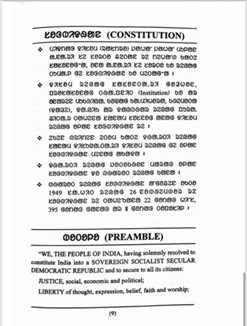
Source:
Image source:
Needed, an Indian Legislative Service: TH
Essence: The article is written in the context of replacement of Dr. P.P.K. Ramacharyulu, the first-ever Rajya Sabha secretariat staff who rose to become the Secretary-General, within 3 months of his appointment. As per the author, appointing serving or retired civil servants as Secretary-General breaches the principle of separation of power. A separate independent secretariat is a feature of a functioning parliamentary democracy as it separates legislature from executive. The secretariat staff has immense knowledge and experience of parliamentary procedures, practices, and precedents and thus can help hold executive accountable to the Parliament more effectively.
At present, legislative bodies (panchayat, block panchayat, zila parishad, municipal corporations, State legislatures and Parliament) lack common public recruiting and training agency. Creating a common all-India service cadre, an Indian Legislative Service, would ensure qualified and well-trained staff.
Why should you read this article?
- To understand about the conventions related to the appointment to the office of Secretary-General of Lok Sabha and Rajya Sabha.
- To know about the importance of Parliament Secretariats and Secretary-Generals.
- To know the pros of appointing secretariat staff as Secretary-General and cons of appointing civil servants as Secretary-General.
- To know the advantages of an Indian Legislative Service.
Source:
A blow to equitable access to essential medicines: TH
Essence: The article draws attention towards a concern that was recently raised by India and South Africa, which is, seeking temporary waiver on affordable vaccines and medical product. The contention provided by them is that the application of intellectual property rights hinders the timely availability of affordable medicines. The problem is that the member of WTO are not able to come at the common solution, including USA which agrees to provide waiver with respect to just the vaccines.
European Union meanwhile has also proposed a solution which is considered as a compromise outcome. This outcome provides for granting compulsory licenses that the government may wish to use in the context of pandemic. Also, the solution provided can be used only by the developing country member of the WTO having less than 10 percent of world exports of Covid 19 vaccines doses in 2021. There are certain conditions to the compulsory licensing which is of concern for India and South Africa. If India and South Africa agrees to the proposal it would jeopardise their high moral ground which they had gained through their attempt to make medicines and medical products necessary.
Why you should read this article?
- To understand the diplomacy around the availability of the affordable medicine.
- To understand the proposals provided by various countries on this issue.
- To understand the stance of India on the current issue .
Source:
Ukraine invasion has revealed a new world disorder: IE
Essence: The editorial talks about a dismal state of world affairs due to Russia’s attack on Ukraine. Powerful countries might think they could win asymmetric wars; however, history shows the immense loss that a strong power bears, against a weaker adversary. The causes for such a situation include international support for weaker nation, practical difficulties of waging a war/use of certain kind of weapons, worn-out political will/ ideological rooting, along with greater degree of freedom that weaker nations possess like guerrilla warfare, targeting civilians, etc.
Definition of superpower, through practical experience, encapsulates fulfilment of objectives by force and ability to withstand and absorb the cost of failure as well. Displacement of people, economic downfall, sanctions, trust deficit, high war casualties, all amount to such costs.
This gives an opportunity for nations like India and China to take a stand against western hypocrisy and create a world order for peace, stability, and prudent interests. While the powerful nations go through miscalculations, conflict and excessive pride, USA is losing ground in the world order, Europe has been unable to support an ally and Russia has let its society and economy suffer. Here, India and China have presented an ambiguous stand towards the Ukraine crisis and this presents an advantageous situation for strategic gain to realize a different world order for the future.
Why should you read this article?
- To understand the issues in balance of power that have cropped up due to Russia-Ukraine war.
- To know why the weaker nations, tend to gain an edge over powerful nations during war.
Source:
Working beyond the boundary
Background
- The pandemic turned the life of migrant workers upside down and the health workers, anganwadi and ASHA workers had to go extra mile to provide services to them.
- Vennila Vadivelu from Coonoor, an anganwadi worker, worked tirelessly during the pandemic to provide basic services to hundreds of migrant workers and tribals around the hilly district of Nilgiris.
How did this lady work beyond her capacity?
- Vennila Vadivelu has been recently awarded the Covid Women Warriors.
- She and her co-workers used to travel through dense forests and undulating terrains to provide ration to the people stuck in these places.
- She was also in-charge of the community kitchen at the Anganwadi centre which was operated by the District Administration.
- They used to provide cooked food and work round the clock for the service provisioning.
- They even went to houses with new-born baby for routine check-up and provide ante-natal and post natal services to the pregnant women and lactating mothers.
Quote: “It is under the greatest adversity that there exists the greatest potential for doing good, both for oneself and others.” Dalai Lama

Source:
Share the article
Get Latest Updates on Offers, Event dates, and free Mentorship sessions.

Get in touch with our Expert Academic Counsellors 👋
Frequently Asked Questions
UPSC Daily Current Affairs focuses on learning current events on a daily basis. An aspirant needs to study regular and updated information about current events, news, and relevant topics that are important for UPSC aspirants. It covers national and international affairs, government policies, socio-economic issues, science and technology advancements, and more.
UPSC Daily Current Affairs provides aspirants with a concise and comprehensive overview of the latest happenings and developments across various fields. It helps aspirants stay updated with current affairs and provides them with valuable insights and analysis, which are essential for answering questions in the UPSC examinations. It enhances their knowledge, analytical skills, and ability to connect current affairs with the UPSC syllabus.
UPSC Daily Current Affairs covers a wide range of topics, including politics, economics, science and technology, environment, social issues, governance, international relations, and more. It offers news summaries, in-depth analyses, editorials, opinion pieces, and relevant study materials. It also provides practice questions and quizzes to help aspirants test their understanding of current affairs.
Edukemy's UPSC Daily Current Affairs can be accessed through:
- UPSC Daily Current Affairs can be accessed through Current Affairs tab at the top of the Main Page of Edukemy.
- Edukemy Mobile app: The Daily Current Affairs can also be access through Edukemy Mobile App.
- Social media: Follow Edukemy’s official social media accounts or pages that provide UPSC Daily Current Affairs updates, including Facebook, Twitter, or Telegram channels.

